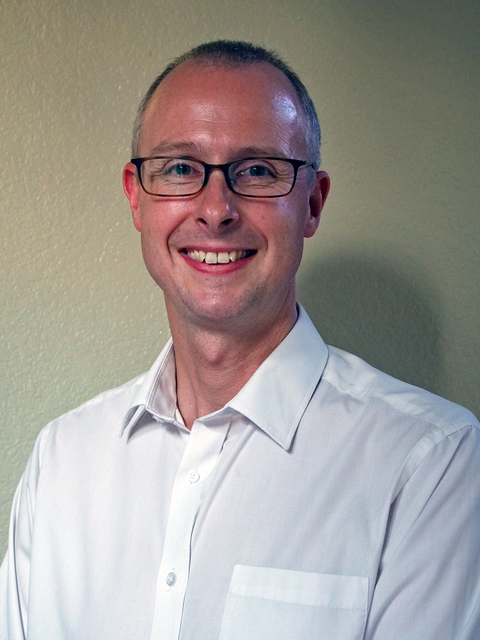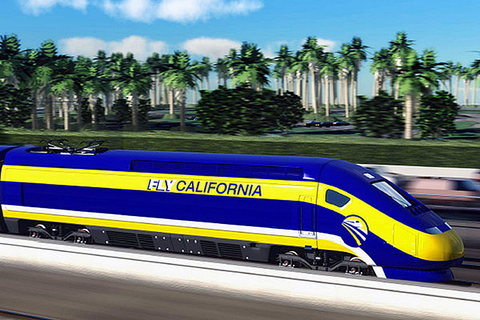
Simon Hughes is the UK native bringing a new methodology and systemic approach to America’s largest ongoing infrastructure project, the California High-Speed Rail. The California High-Speed Rail will bring regular and reliable journeys between San Francisco and Los Angeles and Anaheim. With a journey time of less than three hours, it will deter residents from their cars, replace plane journeys and form a vital part of reducing emissions in California.
We recently sat down with the noted railroad engineer to discuss his role with the California High-Speed Rail and what this project will mean for California and its residents.

Q: Why were you chosen to be part of this project here in the U.S.?
A: I was selected amongst other railroad engineers because of my 20 years of experience in the field and my extensive knowledge of high-speed rail systems. I was working on HS2, the U.K.’s largest railway project, and the opportunity arose in California. It is an exciting project and a great role; so naturally, I had to be a part of it.
Q: What is HS2 and what were you doing there?
A: HS2 was established by the UK Government to design and build a new high-speed rail line between London and key cities in the north of the country. I was the Senior Area Engineer, responsible for the design of the 2.5 billion GBP central London station. I managed a team of designers and regularly met key stakeholders, Government ministers and members of the public. My work led to the successful application of powers to move the project into the construction phase.
Q: What is your role in the California High-Speed Rail project?
A: I was asked to join the Integration and Coordination team charged with ensuring that the numerous parts of the project work together. Unlike building a traditional infrastructure project, high-speed rail is comprised of many elements such as signaling, communications, track, infrastructure. They need to be configured to operate safely together. Without this, the project will not go into fruition. It’s very important for this to be done correctly, and without the right candidate for the job, the railway project could become costlier.
Q: How do you achieve this?
A: My goal was to bring a methodology and systematic approach. I have adopted a tool used within system engineering called verification and validation. This has been a key component of the military and systems processes for a few years but it is among its first application to the infrastructure industry.
It enables designers to easily identify the applicable requirements and produce a design that meets these needs, plus creates a framework in which they can produce the necessary objective evidence to demonstrate compliance with these. I cannot see another way to achieve this unless V and V process is used.

Q: Has this been successful?
A: Yes, very much so. There has been a learning curve but having adopted the process, there are multiple benefits to all parties. The Contractor can show me how they have met the requirements, which I can pass to the Client who is satisfied they have the product they wanted.
Q: What did you do to introduce this system?
A: I had to first devise the processes and procedures, which the project has now adopted. Having created these, I support their implementation and act as a point of contact for questions and control the process.
Q: Now that you have led the way to the successful start of CHSR, where do you see the project going?
A: CHSR is a vital piece of the State transportation plan and I see it developing into something people can’t imagine ever not being there.
Q: With the need for faster and more efficient public transportation, do you see the U.S. adopting a European-like high-speed railway system?
A: The project is revolutionary in the U.S. Passenger rail travel has been common in Europe and Asia for many years, with many families foregoing a car to use trains but here in the U.S., driving has been the standard mode of transport for many years.
It doesn’t need to be a European system, or a Japanese system, but it should be what is right for California and the U.S. It may borrow heavily from established networks to reduce costs, but the solution must meet the needs of the passengers. We must always remember that we are building the railway not because we want to build something, but to allow people to make a journey between two places.
Q: As an expert in the field, what would be your most important recommendation to railway builders in the U.S.?
A: I have met so many talented people since being here. High-speed railway is a system, a complex interaction of parts. To operate successfully, we can’t use the same standards and processes, we need to adapt them and implement something that will ensure the successful delivery of that system. Look at other countries and be open to learn from them. They have many years head start so let’s benefit from it here and hope to make it even better.
About the author
Simon Hughes has worked in the infrastructure design and construction of Railroad projects for almost 20 years. His engineering career has focused on design, management and delivery of major railway projects in both the United Kingdom and most recently the United States. He has held integral roles delivering the multibillion dollar new high speed rail line between London and Paris, the new $25b high speed railroad between London and Birmingham, where he was responsible for the first 50 miles of the route, including the complicated London station and tunnels, and most recently, Simon has been working on the California High Speed Rail Line, based in USA.